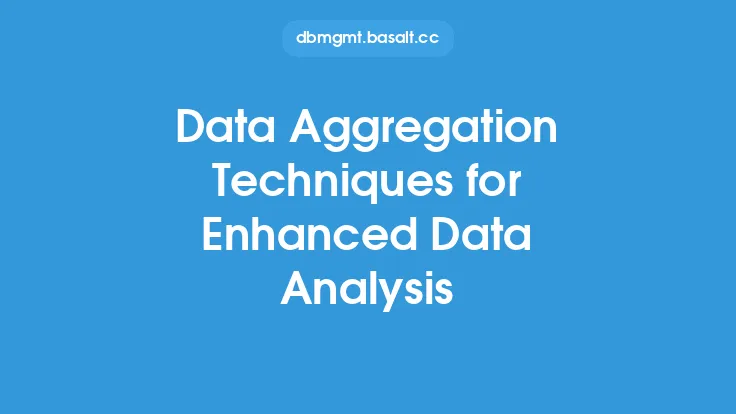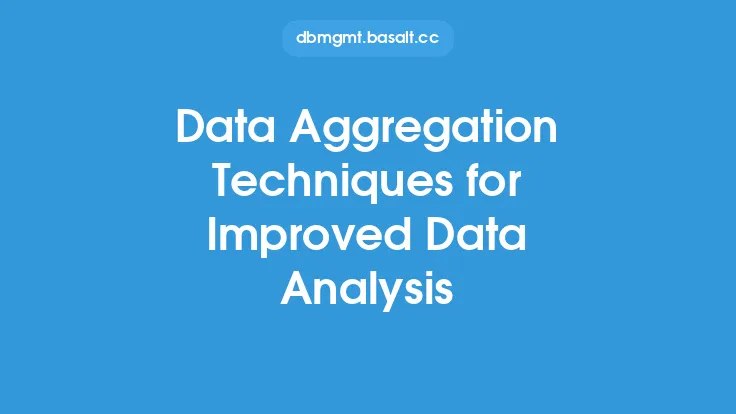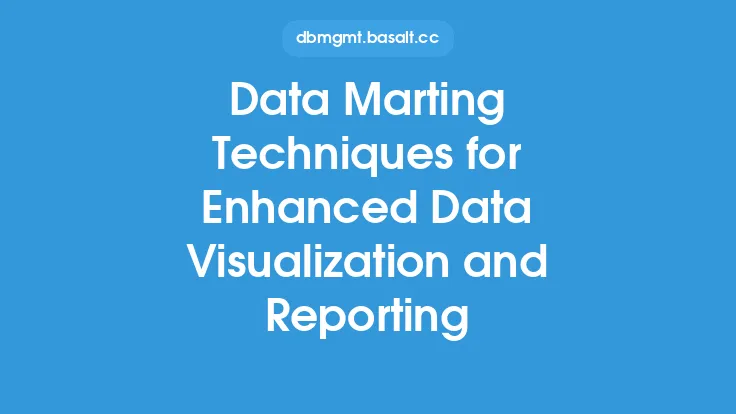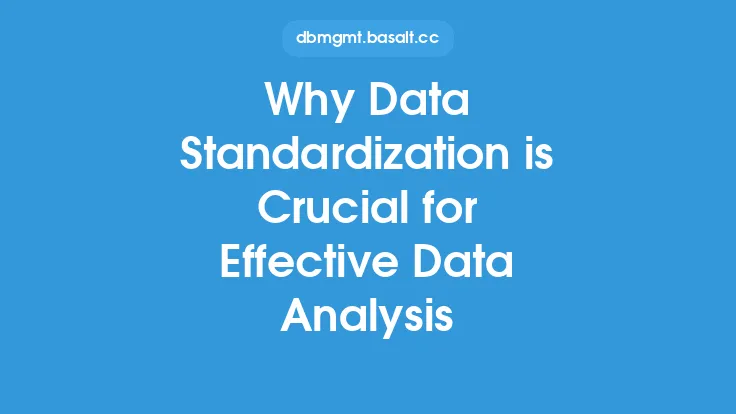Data aggregation is a crucial process in data analysis that involves collecting and combining data from multiple sources into a single, unified view. This process enables organizations to gain insights into their data, identify trends, and make informed decisions. There are various data aggregation techniques that can be employed to enhance data analysis, each with its own strengths and weaknesses.
Introduction to Data Aggregation Techniques
Data aggregation techniques can be broadly categorized into two main types: manual and automated. Manual data aggregation involves manually collecting and combining data from multiple sources, which can be time-consuming and prone to errors. Automated data aggregation, on the other hand, uses software tools and algorithms to collect and combine data, reducing the risk of errors and increasing efficiency. Some common automated data aggregation techniques include data warehousing, extract-transform-load (ETL) processes, and data virtualization.
Data Warehousing
Data warehousing is a popular data aggregation technique that involves creating a centralized repository of data from multiple sources. A data warehouse is a database designed to support business intelligence activities, such as data analysis and reporting. Data warehousing involves extracting data from various sources, transforming it into a standardized format, and loading it into the data warehouse. This technique enables organizations to consolidate their data into a single, unified view, making it easier to analyze and gain insights.
Extract-Transform-Load (ETL) Processes
ETL processes are a type of data aggregation technique that involves extracting data from multiple sources, transforming it into a standardized format, and loading it into a target system. ETL processes are commonly used in data warehousing and business intelligence applications. The extract phase involves collecting data from various sources, such as databases, files, and applications. The transform phase involves converting the data into a standardized format, which may include data cleansing, data validation, and data aggregation. The load phase involves loading the transformed data into the target system, such as a data warehouse or a database.
Data Virtualization
Data virtualization is a data aggregation technique that involves creating a virtual layer of data that spans multiple sources. This technique enables organizations to access and analyze data from multiple sources without having to physically move or copy the data. Data virtualization uses software tools to create a virtual database that provides a unified view of the data, making it easier to analyze and gain insights. This technique is particularly useful for organizations that have multiple data sources and need to analyze data in real-time.
Rollup and Drill-Down Techniques
Rollup and drill-down techniques are data aggregation methods that enable organizations to analyze data at different levels of granularity. Rollup involves aggregating data from a detailed level to a summary level, while drill-down involves analyzing data from a summary level to a detailed level. These techniques are commonly used in data analysis and reporting applications, such as business intelligence and data visualization. Rollup and drill-down techniques enable organizations to gain insights into their data and identify trends and patterns.
Grouping and Window Functions
Grouping and window functions are data aggregation techniques that enable organizations to analyze data based on specific criteria. Grouping involves dividing data into groups based on one or more columns, while window functions involve applying calculations to a set of rows that are related to the current row. These techniques are commonly used in data analysis and reporting applications, such as SQL and data visualization. Grouping and window functions enable organizations to gain insights into their data and identify trends and patterns.
Data Aggregation in Big Data Analytics
Data aggregation is a critical component of big data analytics, which involves analyzing large volumes of data from multiple sources. Big data analytics uses various data aggregation techniques, such as data warehousing, ETL processes, and data virtualization, to collect and combine data from multiple sources. Data aggregation in big data analytics enables organizations to gain insights into their data, identify trends and patterns, and make informed decisions. Some common big data analytics tools that use data aggregation techniques include Hadoop, Spark, and NoSQL databases.
Best Practices for Data Aggregation
To get the most out of data aggregation, organizations should follow best practices, such as defining clear goals and objectives, selecting the right data aggregation technique, and ensuring data quality and integrity. Organizations should also consider factors such as data security, data governance, and data compliance when implementing data aggregation techniques. Additionally, organizations should continuously monitor and evaluate their data aggregation processes to ensure they are meeting their goals and objectives.
Conclusion
Data aggregation is a critical process in data analysis that enables organizations to gain insights into their data, identify trends and patterns, and make informed decisions. Various data aggregation techniques, such as data warehousing, ETL processes, and data virtualization, can be employed to enhance data analysis. By following best practices and selecting the right data aggregation technique, organizations can unlock the full potential of their data and drive business success. As data continues to grow in volume and complexity, data aggregation will play an increasingly important role in helping organizations to extract insights and value from their data.





